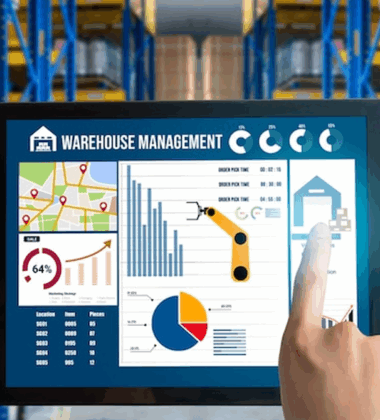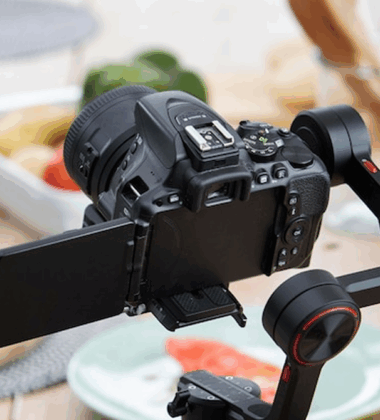Trade shows have long been associated with high energy, bustling booths, and nonstop interaction. But as the needs of attendees evolve, so too must the environments we create. In 2025, one trend is rising above the noise—literally. The inclusion of quiet spaces is quickly becoming a non-negotiable feature in forward-thinking trade show planning, especially at large-scale events like the food and beverage expo USA.
As we look ahead to the Global Products Expo 2025, taking place from June 26–28 at the New Jersey Expo Center, exhibitors and organizers alike are shifting gears. They’re embracing more mindful expo designs that support not only productivity but also wellness, reflection, and human connection.
The New Standard: Mindfulness in Event Environments
Today’s trade show attendee is different. Whether they’re sourcing suppliers, scouting innovation, or pitching a new line, they’re also managing digital fatigue, travel stress, and sensory overload. According to a 2024 EventMB industry report, over 71% of expo attendees said they feel overstimulated during trade shows, and 68% would stay longer at events that offered designated calm zones.
For exhibitors at the food and beverage expo, that’s an opportunity. A well-designed quiet space isn’t just a luxury—it’s a strategic advantage.
What Is a Quiet Space in Trade Show Planning?
A quiet space is a low-stimulation zone within a trade show where attendees can step away from the crowds to regroup. These spaces may include:
- Soft lighting and sound-absorbing materials
- Minimalist furniture or private pods
- Aromatherapy or greenery
- Guided mindfulness tools (e.g., breathing apps or QR codes)
- No devices or minimal tech usage
- Optional refreshments or calming herbal teas
Rather than distracting from the event experience, these areas enhance it, allowing attendees to return to the floor recharged, more focused, and more likely to engage meaningfully with brands and products.
Why Quiet Spaces Matter at a Food and Beverage Expo
The food and beverage expo USA is a sensory-rich environment: aromas of global cuisines, vibrant packaging, live demos, and intense networking. This is part of its appeal—but it can also become overwhelming.
When done well, quiet spaces can:
- Support neurodivergent and highly sensitive attendees
- Reduce expo fatigue and increase time spent on-site
- Encourage reflective decision-making (better for B2B deals)
- Promote a sense of emotional safety, which builds trust
For exhibitors and organizers, that means longer engagement windows and better-quality interactions.
Data-Driven Design: What the Numbers Say
Here’s why adding quiet spaces to your trade show planning is not just thoughtful, but practical:
- 84% of attendees say they’re more likely to return to an event that offers wellness amenities.
- Companies that integrated mindful design at expos saw a 27% increase in lead quality (Event Wellness Index, 2024).
- Quiet zones often double as high-value spaces for impromptu VIP meetings or buyer conversations.
As the Global Products Expo 2025 prepares to host thousands of attendees, wellness-led layouts will play a critical role in improving flow and satisfaction.
What Organizers Can Do to Prioritize Quiet Zones
If you’re part of the planning team for a major food and beverage expo, consider these key strategies:
1. Location Strategy
Place quiet spaces away from main traffic zones but not so remote that they’re inaccessible. A tucked-away corner near natural light is ideal.
2. Signage and Accessibility
Use inclusive, welcoming signage that clearly explains the purpose of the space. Incorporate icons and translations for international visitors.
3. Furniture and Sensory Design
Use soft textures, earth tones, and natural materials. Avoid harsh lighting or music. If possible, include calming greenery or biophilic elements.
4. Time-Limited Access
Offer 20-minute usage windows during peak hours to maximize availability. Self-cleaning tech or sanitizing wipes can help maintain hygiene.
5. Digital Integration
Allow visitors to book a time slot or check wait times via QR codes. This keeps traffic flowing and enhances the visitor experience.
Exhibitor Advantage: Use Quiet Spaces to Your Benefit
If you’re exhibiting at the food and beverage expo USA, you might assume a quiet zone doesn’t benefit your brand. That’s a misconception. Here’s how to integrate mindfulness into your trade show planning as an exhibitor:
- Create a mini reset corner within your booth: Include aromatherapy samples, soft textures, or calming product videos with low sound.
- Invite VIP buyers to a private sensory space: Use it for sampling herbal teas, new functional beverages, or wellness supplements.
- Offer branded mindfulness tools: Branded journals, herbal eye masks, or tea sachets make for meaningful swag.
These elements signal that your brand cares not just about selling—but about supporting a more human experience.
Quiet Space, Big Impact: Real-Life Expo Examples
- Wellness Pods at Natural Products Expo
At the 2024 show, organizers introduced compact wellness pods near each hall. Each pod included soft seating, aromatherapy, and reflective prompts. Attendee satisfaction scores rose by 33% compared to the previous year. - The Calm Booth Concept
A leading beverage brand set up a side booth as a “calm tasting lounge,” offering herbal drinks in a serene, forest-themed setup. Not only did traffic increase, but product conversations were longer and more focused. - Meeting Zones with Mindful Design
Another exhibitor introduced Japanese-inspired meeting zones featuring tatami mats, soft lighting, and sound buffers. The space was reserved via QR code and became one of the most talked-about booths on social media.
A Blueprint for Wellness-First Event Planning
If you’re organizing, designing, or exhibiting at a food and beverage expo, here’s how to integrate quiet space concepts into your plan:
| Element | Why It Matters | How to Implement |
| Soundscaping | Noise is one of the top stressors at trade shows | Use soft music, water features, or white noise |
| Lighting | Harsh lighting can create sensory overload | Use dimmable lights and indirect sources |
| Texture | Cold or hard surfaces reduce comfort | Opt for warm fabrics and cushioned seating |
| Purpose | Visitors need a reason to use the space | Include journaling prompts or product reflection cards |
Setting the Tone for the Future of Expos
The trade show landscape is changing—and fast. The most successful expos in 2025 and beyond will be those that balance energy with intentionality, stimulation with serenity. The inclusion of quiet spaces is more than a design trend—it’s a cultural shift.
The Global Products Expo 2025 presents the perfect stage to lead this evolution. Whether you’re curating an event floor, managing a booth, or walking the aisles as a buyer, it’s time to think differently about what makes an expo great.
Because when we plan for wellness, we don’t just create better events—we build deeper, more sustainable relationships between brands and people.





